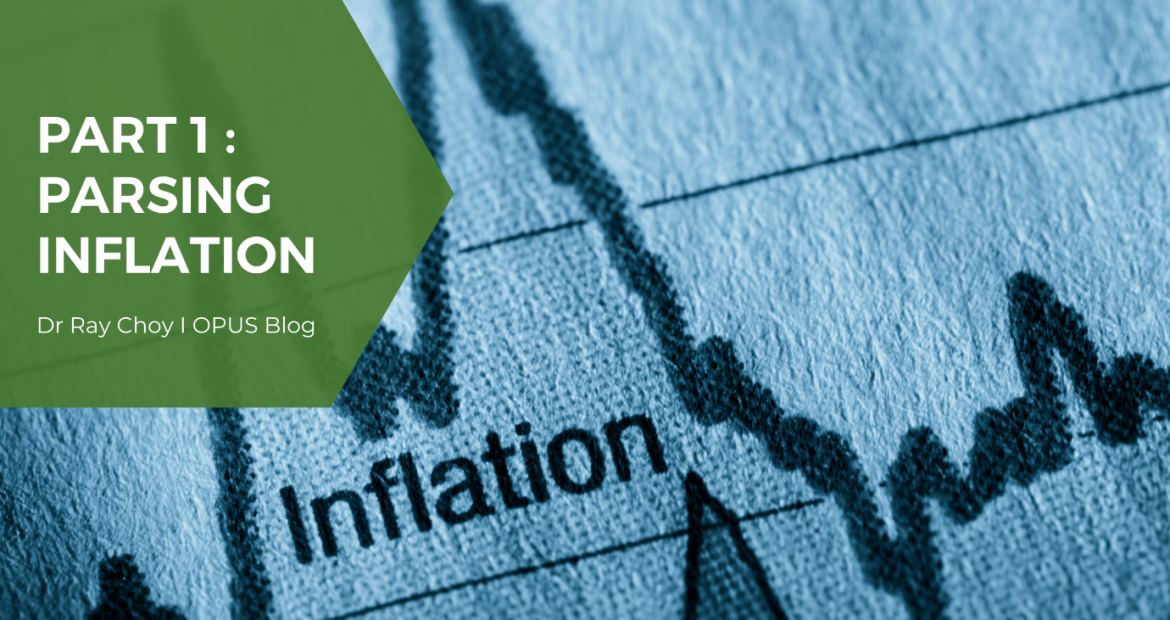By Dr Ray Choy, Head of Economics & Research
Refining the inflation rhetoric
Inflation concerns have moved forward significantly, to the extent that various states of transience are now being analysed to the bone. Federal Reserve Chairman Powell has characterised inflation as being transitory, the more commonly used term in today’s global inflation narratives. Atlanta Fed President Bostic had recently characterised inflation as episodic rather than transitory, alluding to the specificities of how inflation has evolved. In this regard, inflation is not merely temporary, but rather multi-dimensional. This argument is worth exploring in view of the panic we have seen in global bond markets of late.
Market volatility has been high despite the IMF expecting inflation to eventually decline in 2022, similar with the Federal Reserve economists expecting inflation to fall below 2% periodically in 2022, or read a comfortable 2.2% for 2022 as a whole. Market expectations need to be further analysed if we are to form a holistic view of inflation. Given the recent carnage in the bond markets, the general view appears to be one of high and persistent inflation. It appears that the market was rather discomforted by the jump in inflation as recorded by the PCE indicator (US Personal Consumption Expenditure Core Price) from under 2% in March-2021 to more than 3% since April-2021.
Even within the bond market, interpretations differ
However, given the bond yield movements since April, the financial market had been all but consistent. Firstly, inflation maintained above 3% since April-2021 and despite that, bond yields experienced a period of decline to under 1.20% in August-2021. Secondly, TIPS (Treasury Inflation Protected Securities) indicate implied inflation is slightly below 2.5% five years ahead. This is by no means unmanageable, since the historical upper limit had been 3%, even during the commodities price boom in 2008. In fact, implied inflation had been priced above 2% by TIPS for most of 2021, hence the sell-off in the bond market in relation to the inflation narrative is somewhat perplexing.
When Atlanta Fed President Bostic discussed episodic inflation, he was probably referring to the fact that the pandemic had caused supply chain disruptions and therefore, the events leading to high inflation are unique, one-off, and unlikely to be persistent. Bostic could have disliked the use of the word “transitory” since he was focused on the unique events amid the pandemic causing the temporariness of inflation. By this logic, episodic inflation could be interpreted as less severe than transitory inflation, since the causalities are narrower in scope. In other words, while the manifestation of inflation may be different from the duration of inflation, both are interdependent aspects. Practically, supply chains need time to normalise, and it is risky to assume that would not happen, since building supply chains are supported by the profit incentive to fulfil post-pandemic pent-up demand bursting at the seams.
Trends and symptoms of inflation are divergent
Another important facet to analyse is the patchiness of both the inflation trend and its manifestation. Inflation at developed markets and emerging markets are different in several aspects. Firstly, inflation at the developed markets has been running at around 2.0% for the last two decades, and is expected to accelerate to 2.8% in 2021. Meanwhile, inflation at the emerging markets was 5.8% over the last two decades and is expected to decelerate to 5.5% in 2021. The deceleration in inflation is even more evident in the ASEAN-5, where it is forecasted at 2.0% in 2021, compared to its two-decade average of 4.5%. This is especially interesting since ASEAN-5 inflation is not only lower than the advanced economies in 2021, but is forecasted to match 2022 inflation at the advanced economies in the region of 2.5%. Collectively, inflation in the emerging markets is within its historical range and is therefore, likely to be manageable.
Another conclusion we could make is that inflation had been mainly centered in the developed world, where GDP is expected to accelerate to 5% in 2021, compared to its two-decade average of 1.7%. For the emerging markets, GDP growth is decelerating to 5.5% in 2021 from its 5.8% two-decade average. This paints the picture of divergent growth and inflation trajectories between the emerging and developed markets.
Analysing these numbers, it appears that the manifestation of inflation at the advanced economies is tilted towards being demand-pulled, given the acceleration in GDP growth over the long-term average following larger stimulus at the developed economies in comparison to the emerging economies. Conversely, this implies that inflation at the emerging economies is inclined towards being cost-pushed given relatively more prudent fiscal packages relative to the developed economies.
A Couple of Initial Conclusions
The interpretations of inflation, and whether it is transitory or episodic highlights that inflation is not a mere price index number, but gives rise to nuanced beliefs that are framed by various causes, intensities, and time. At the moment, the primary bond market and variants such as the TIPS market are not in consensus regarding the level of expected inflation. Furthermore, inflation trends are not homogeneous, since developed economies are experiencing inflation acceleration, while inflation at emerging economies including the ASEAN-5 is either flat or decelerating, and well within its historical range.
In the second part of this article, I explore the manifestation of inflation, whether it is cost-pushed or demand pulled, and its implications on policy. In addition, I will further explore recent narratives such as stagflation and emergent signs that there is considerable uncertainty that inflation will remain high and persistent.
Disclaimer
The information, analysis and opinions expressed herein are for general information only and are not intended to provide specific advice or recommendations for any individual entity. Individual investors should contact their own licensed financial professional advisor to determine the most appropriate investment options. This material contains the opinions of the manager, based on assumptions or market conditions and such opinions are subject to change without notice. This material has been distributed for informational purposes only and should not be considered as investment advice or a recommendation of any particular security, strategy or investment product. Information provided herein may include data or opinion that has been obtained from, or is based on, sources believed to be reliable, but is not guaranteed as to the accuracy or completeness of the information. No part of this material may be reproduced in any form, or referred to in any other publication, without express written permission. Opus Asset Management Sdn Bhd and its employees accept no liability whatsoever with respect to the use of this material or its contents.





